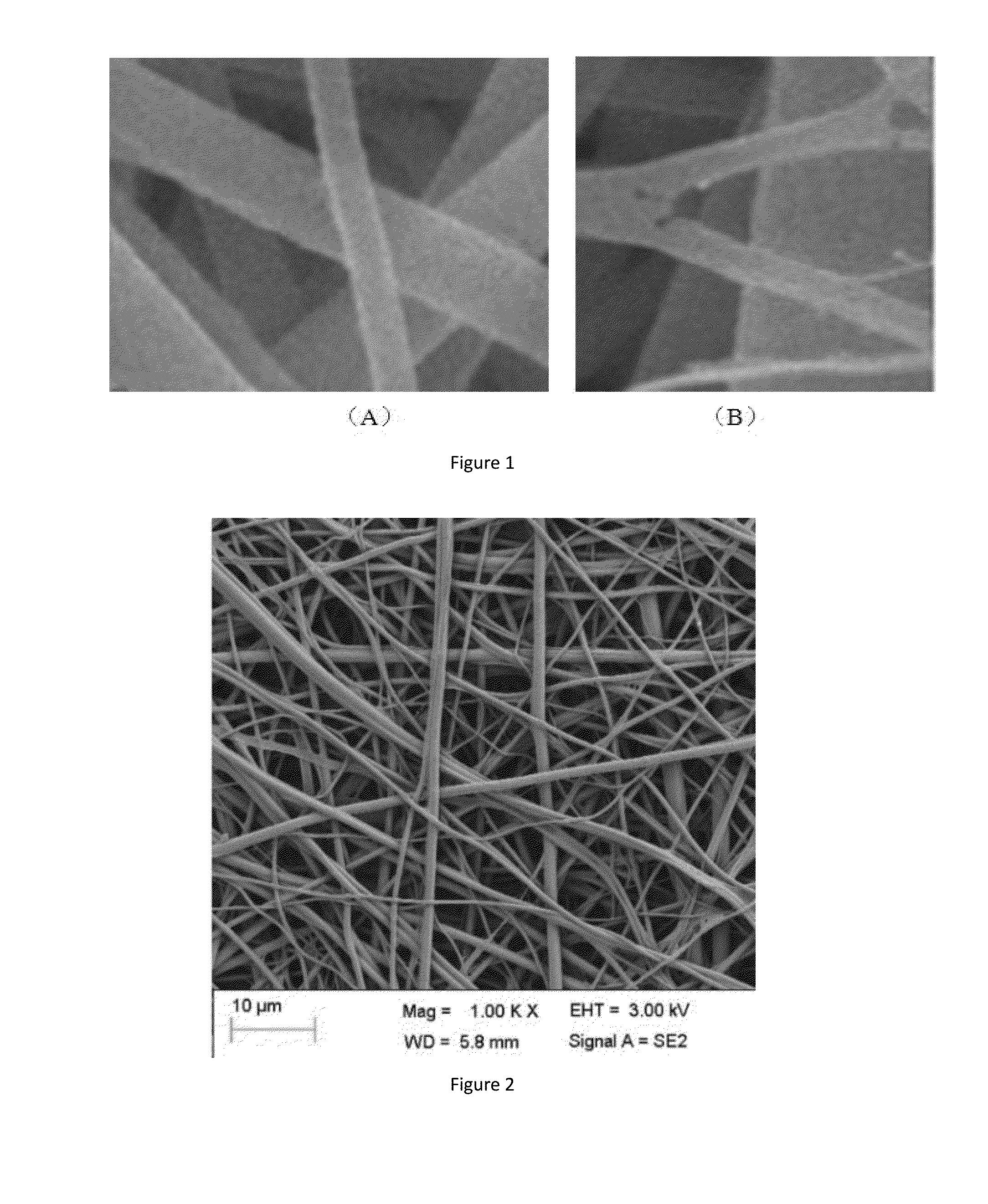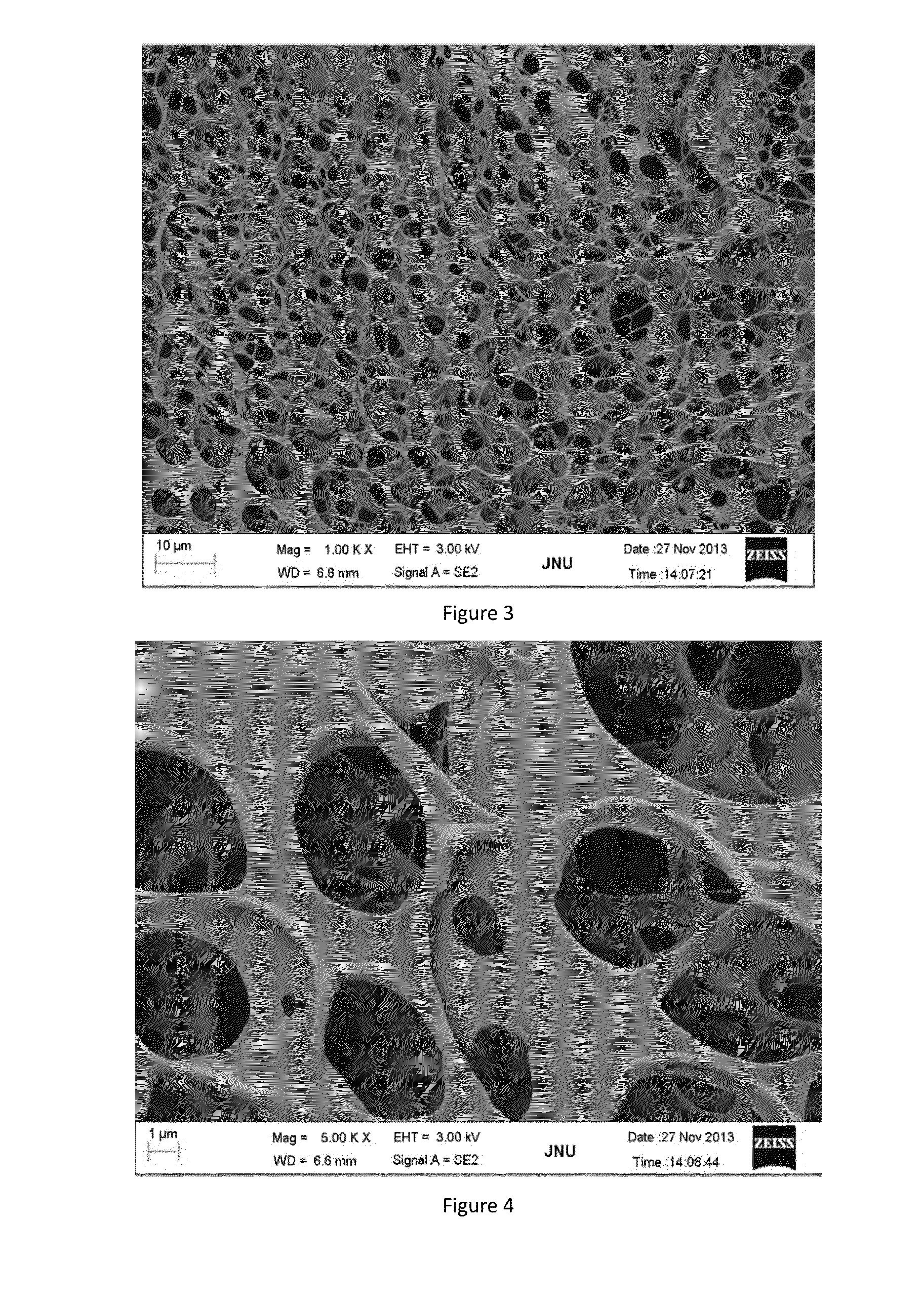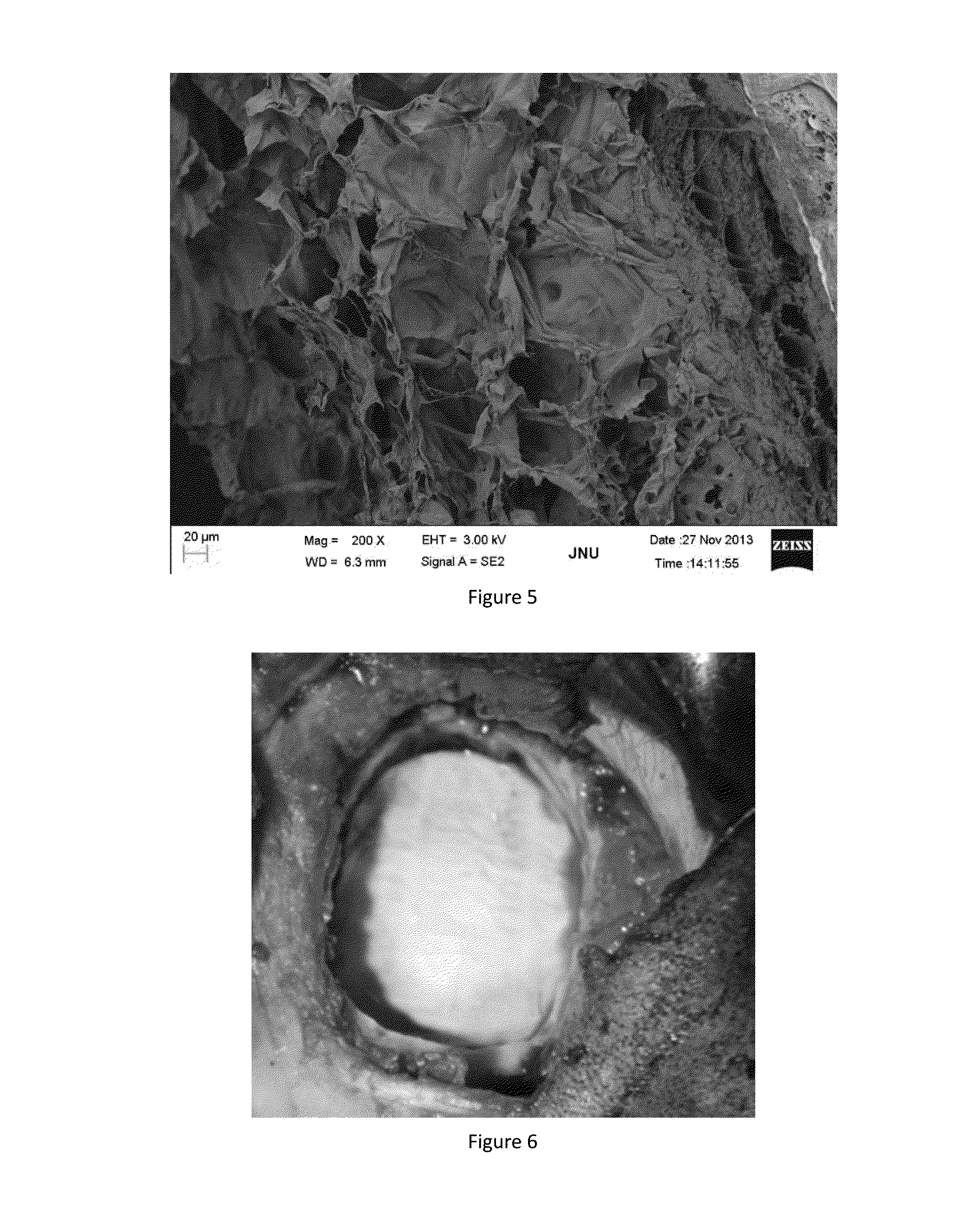Tissue repair scaffold and preparation method and purpose thereof
a tissue repair and scaffold technology, applied in the field of tissue repair scaffold and preparation, can solve the problems of difficult material to form favorable adhesion with the tissue, product rough surface, relatively hard texture, etc., and achieve the effect of high porosity, unique structure and specific surface area
- Summary
- Abstract
- Description
- Claims
- Application Information
AI Technical Summary
Benefits of technology
Problems solved by technology
Method used
Image
Examples
first embodiment
[0045]In this embodiment, the tissue repair scaffold comprises a surface of at least one layer of composite fiber layer(s), said composite fiber layer comprises composite fibers formed with an adhesion factor and a hydrophobic synthetic material. The tissue repair scaffold may be formed with only one layer of composite fiber layer, in this instance the tissue repair scaffold is substantially a “composite fiber membrane”. The “composite fiber membrane”, when used as a layer of the tissue repair scaffold, is referred to as a “composite fiber layer”. Therefore it should be understood that the “composite fiber membrane” and the “composite fiber layer” in the present disclosure are synonyms only differ in nomenclature; they possess the same structure and composition, both comprise composite fibers formed with adhesion factors and hydrophobic synthetic materials.
[0046]
[0047]The composite fiber layer of the present disclosure comprises composite fibers formed with an adhesion factor and a ...
second embodiment
[0067]In this embodiment, the tissue repair scaffold has a porous 3D reticulate structure formed by a composite fiber layer and a hydrophilic material; said composite fiber layer contains composite fibers formed with adhesion factors and hydrophobic synthetic materials. Wherein the composite fiber layer is the same with that described in the first embodiment above.
[0068]
[0069]In this embodiment, the tissue repair scaffold has a porous 3D reticulate structure formed by a composite fiber layer and a hydrophilic material. The porous 3D structure is formed on and / or inside the surface of the composite fiber layer.
[0070]The porous 3D reticulate structure can be formed through the steps of: immersing the prepared composite fiber layer (membrane) into a solution of hydrophilic material; taking out the composite fiber layer; and freeze-drying the composite fiber layer.
[0071]The hydrophilic material used for forming the porous 3D reticulate structure may be proteins with certain degree of hy...
example 1
[0083]PCL and gelatin were dissolved in trifluoroethanol in a mass ratio of 10:1 to form a solution. The solution entered into a centrifugal spinning machine via a propel pump. The propelling rate of the propel pump was 150 g / min; the velocity of centrifugal coiling was 6000 m / min. The solution was rapidly spun into fibers at a spinning temperature of 50° C. Once the procedure was completed, the membrane was taken from the receiver, and the solvent was removed by vacuum drying, so that a composite fiber membrane was obtained.
[0084]An SEM image of the composite fibers is shown in FIG. 1-A. After being treated with water at a temperature of 50° C., which may dissolve gelatin but may not dissolve PCL, the composite fiber has an SEM image as shown in FIG. 1-B. It can be clearly observed that the composite fibers have a composite structure formed by PCL and gelatin.
PUM
| Property | Measurement | Unit |
|---|---|---|
| contact angle | aaaaa | aaaaa |
| water absorption ratio | aaaaa | aaaaa |
| water absorption ratio | aaaaa | aaaaa |
Abstract
Description
Claims
Application Information
 Login to View More
Login to View More - R&D
- Intellectual Property
- Life Sciences
- Materials
- Tech Scout
- Unparalleled Data Quality
- Higher Quality Content
- 60% Fewer Hallucinations
Browse by: Latest US Patents, China's latest patents, Technical Efficacy Thesaurus, Application Domain, Technology Topic, Popular Technical Reports.
© 2025 PatSnap. All rights reserved.Legal|Privacy policy|Modern Slavery Act Transparency Statement|Sitemap|About US| Contact US: help@patsnap.com



